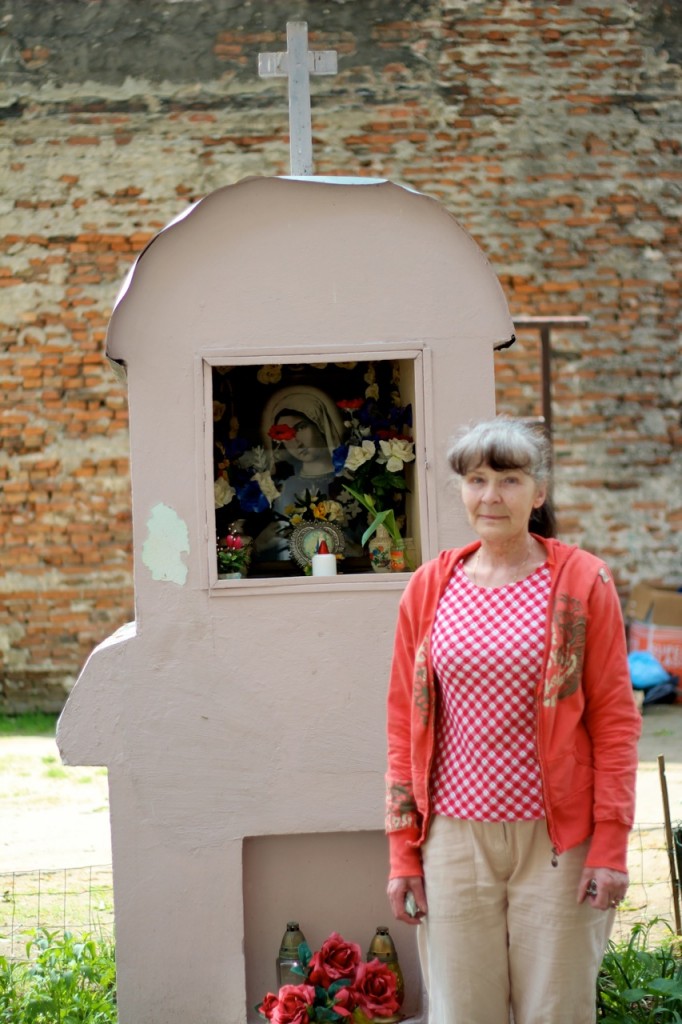Inspection 2/4 : Kapliczka with Justinia
The second day, we went for a walk with Justinia, one of the pedagogues here. She knows a lot of people here of course, and the most important, she speaks polish. We asked her if it’s possible to meet some people she knows, to enter a little bit in the neighborhood’s life.
And so with her, we quite naturally passed the bramas, and simply entered in the backyards.
And as I supposed the first day, when you pass the bramas, there are worlds that suddenly pop up.
Just to say a little bit about the two main backyards we entered in :
In the first one were two men, drinking beers on a stair of stone. Justinia knew them a bit, because she is working with some kids that live in buildings around this backyard. It was a backyard i’ve been passing by, shooting some picture of, but didn’t dare to enter in.
We began to talk and the men told us a little about this place : that they spend here the main part of their days, that a neighbor would always put some music, another would come with something to drink, that in the past, they had here hundreds of pigeons, but that finally, the police had forbidden the breeding of pigeons, and they had to take them to the countryside. As we left them, the guys invited us to come back on the weekend, when there will be a party and many people and vodka to drink.
Then we continued to walk, and we entered another backyard, passing through another brama I had taken picture of. There was a woman cleaning a little monument, in the center of the backyard. This monuments are very common here, they are small chapels, called “Kapliczka”, and you would find them in most of the backyards. They belong to the local “folklore” of Warsaw.
[Ala & the kapliczka]
That woman seemed very happy to talk about the Kapliczka and talked with us for about two hours or more : about the Kapliczka itself, built during the second world war and the german occupation, when the german soldiers used to close the backyards, locking people in for days and nights and months, mostly the women since the husbands and sons were gone to the war or to forced labor. At this time, women couldn’t get out to the church, so they built this Kapliczka-s to have a place to pray. the women told us the story of a german soldier, living here and that protected the inhabitants, and many other stories.
Then came the communists, and the woman told us about the role of religion as a kind of only alternative ideology to the communist totalitarism.
And then came the democracy and the capitalism and people here are not quite sure that freedom is better…
Some other neighbors joined us, and we continued talking like this. We planned to meet, the day after, with some coffee and tea, and chairs we would bring.
[Therenia]
I was surprised by this Kapliczka, as something people of a same building are taking care commonly, cleaning it, putting some flowers on it, repainting it when it’s necessary… Without any explicit rule or organization.
I was also stroked by the eagerness of our hosts to tell stories about the second world war, about the neighborhood. As if they have had that stories inside for years and nobody to tell them. As also if the Kalpliczka was used to support this memory.

